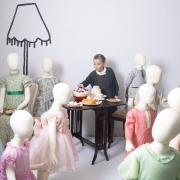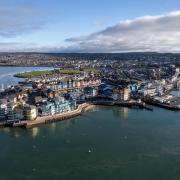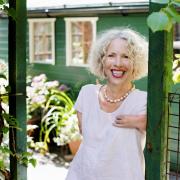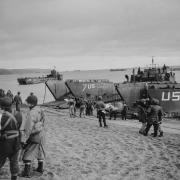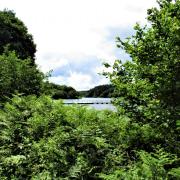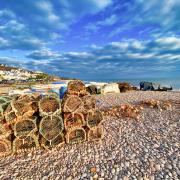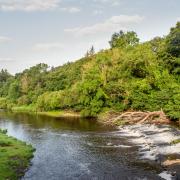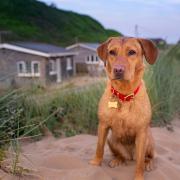JOHN WRIGHT tells the tragic tale of a Devon man famous in Australia for a legendary expedition which ended in torment and tragedy
His diary shone with optimism. The expedition – to become the first Europeans to cross Australia from south to north and back – would become the most famous in Australian history, its steady surveyor documenting every step, including the fateful one that led to its undoing.

William John Wills was born on January 5, 1834 in Totnes, son of Dr William Wills and Sarah Mary Elizabeth, née Calley (Kelly), and was 19 when he arrived in Australia to work as a shepherd, study surveying and work at a Melbourne observatory. The expedition leader was charming 39-year-old Robert O’Hara Burke, a man who one historian called “impulsive, quick-tempered and recklessly brave.”
The expedition heaved its way out of Melbourne on August 20, 1860, watched by 15,000 people. It was made up of 21 men, 23 horses, 26 camels (managed by George Landells) and broken-down wagons carrying two tons of equipment and enough food for two years. On November 11, halfway, they reached Cooper’s Creek, and on December 16, Burke would make his ‘dash’ to the Gulf of Carpentaria 750 miles with Wills, 18-year-old John King and Charles Gray.

The plan was for William Brahe and four men to stay at Cooper’s Creek for at least three months. Wills’ diary recalled Burke’s instructions: “…not to leave until our return, UNLESS FROM ABSOLUTE NECESSITY”. They reached the Gulf on February 11, knowing they had one month of their three to return to Cooper’s Creek. But even by making the same pace in the heat of summer they knew they’d be a month late.
Gray died, and Burke, Wills and King arrived, half-starved back at Cooper’s Creek, on April 21, dismayed to see a message dated that same day, ‘DIG 3FT. NW’, carved into a tree, telling them where food and supplies and a note were buried. There was still one simple thing any of them could have done to stay alive. They buried a message in the same hole, but forgot to cut another message into the tree saying they’d done so.

Brahe was only eight hours ahead but they were too weak to catch him. They also had no idea that, ten days later, Brahe would feel bad about it and ride back to the tree to see if there was any sign of them. But, seeing no message, he’d left again. Even Wills returned twice, both times forgetting to carve another message.
Aborigines arrived, disappeared; they hoped they’d return. But Burke shot at one taking some cloth, Wills writing, “A large tribe came pestering us to go to their camp and have a dance, which we declined.” They collected seeds from nardu, a fern they’d seen them crush into bread. They shot and ate crows and caught a fish. “June 16,” Wills wrote, “We finished up the remains of Rajah [their camel] for dinner.”

William had been lost before. As a three-year-old in Devon, his father would write in his 1863 book poignantly titled A successful exploration through the interior of Australia, that once “he was in the garden of a neighbour…we began to be alarmed lest he might have fallen into a well…until his mother thought of the school where he was found, book in hand.”
Another time, “we put up for the night at the Royal Hotel, at Devonport where the landlady and servants were much taken by their juvenile visitor. The next morning, I had business to attend to and when I returned, the boy was missing. He was discovered at the window of a nautical instrument maker’s shop.”

Wills’s diary ended on June 27 indecipherably. Within a week, King found Burke and Wills dead. When Wills Senior later asked King, “how my son behaved, his answer was that he never once showed the slightest anger or loss of self-command”.
King had tried to keep them alive, and when eventually found by searchers, he was taken, half-dead, back to Melbourne where an astonishing 40,000 people lined the streets to greet him and watch the funeral carriage for Burke and Wills drawn by six black horses.
Memorials to Burke and Wills have been erected in Melbourne and many Australian towns, one for William Wills placed at Totnes in 1864 – all of them permanent reminders of courage, human folly and the simple mistakes that can befall any of us.

Burke’s bungles
1. He was inexperienced in bushcraft.
2. His instructions had to be sent after him because they weren’t ready in time.
3. He fell out with his foreman just after the start.
4. He dumped some provisions along the way so they could travel light, including lime juice, which could have saved four deaths from scurvy.
5. He argued with Landells, who quit.
6. He replaced Landells with William Wright to provide base camp support at Cooper’s Creek, unaware that he’d leave three months late, lose his way and half his men, and send a man to fetch camels who never arrived.
7. Had they ridden horses or camels back to Cooper’s Creek instead of walking, Brahe would still have been there to lead them safely home.






